USS Nina Found and Identified
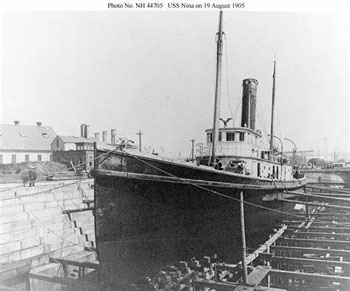
The USS Nina tied up at dock. Credit: National Archives
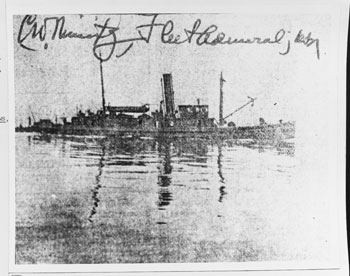
Original early times photo of USS Nina. Credit: National Archives
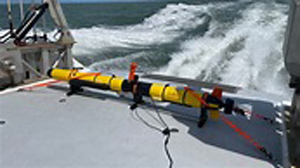
Mark Ludine and Kaitlyn McPherran prepare the drone for a run over the wreck. Credit: University of Delaware
Dr. Trembanis added, “What makes shipwrecks interesting and useful, from a human history standpoint, is they are a snapshot of a thrilling moment…whether they went down in a storm or some accident, battle, whatever. It becomes an encapsulation of that moment for that ship.” The mission’s leader was pleased with his students’ attitude and work ethic and glad they were exposed to the school’s new equipment. They also reviewed and wrote data, assisted in finding the ship and charted her position showing she was off the borderline of the Maryland and Delaware coasts.
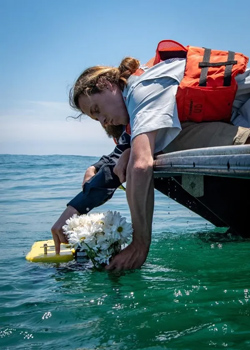
Mark Ludine prepares flowers to be a memorial to the ship and her crew. Credit: University of Delaware
To end the mission, Lundine helped attach a floral arrangement to a claw on one of the ROVs in memory of the sailors lost at sea. The team gathered in a circle on the boat deck for a moment of silence and prayer for the victims. “We’re using all this new high- tech equipment,” Dr. Trembanis said, “and it’s exciting, but we’re also observing a very solemn moment in memory of the unforeseen tragedy.”
Note: In the late summer, 2023, the University of Delaware team plans to carry out a similar mission to the Great Lakes where they will join researchers and scientists from NOAA, the National Oceanic and Atmospheric Administration, to look for shipwrecks in Lakes Michigan and Ontario.
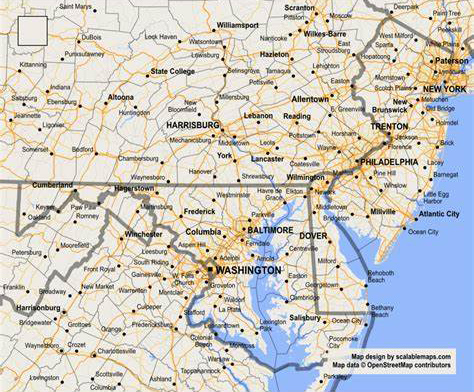
Map shows borderline between Maryland and Delaware. USS Nina lies off these coasts. Credit: University of Delaware
Author: Ellsworth Boyd
Ellsworth Boyd, Professor Emeritus, College of Education, Towson University, Towson, Maryland, pursues an avocation of diving and writing. He has published articles and photo’s in every major dive magazine in the US., Canada, and half a dozen foreign countries. An authority on shipwrecks, Ellsworth has received thousands of letters and e-mails from divers throughout the world who responded to his Wreck Facts column in Sport Diver Magazine. When he’s not writing, or diving, Ellsworth appears as a featured speaker at maritime symposiums in Los Angeles, Houston, Chicago, Ft. Lauderdale, New York and Philadelphia. “Romance & Mystery: Sunken Treasures of the Lost Galleons,” is one of his most popular talks. A pioneer in the sport, Ellsworth was inducted into the International Legends of Diving in 2013.
1 Comment
Submit a Comment
All Rights Reserved © | National Underwater and Marine Agency
All Rights Reserved © | National Underwater and Marine Agency
Web Design by Floyd Dog Design
Web Design by Floyd Dog Design

The unfortunate circumstances that brought about the loss of the Nina and her entire crew are truly unsettling. The tribute by the students and UD staff were an important gesture at paying homage to the lost Nina crew members. The survey of the site and the data collection are also a most meaningful outcome. The educational value associated with this investigative venture will no doubt stay with the students for the rest of their lives–a very positive outcome!